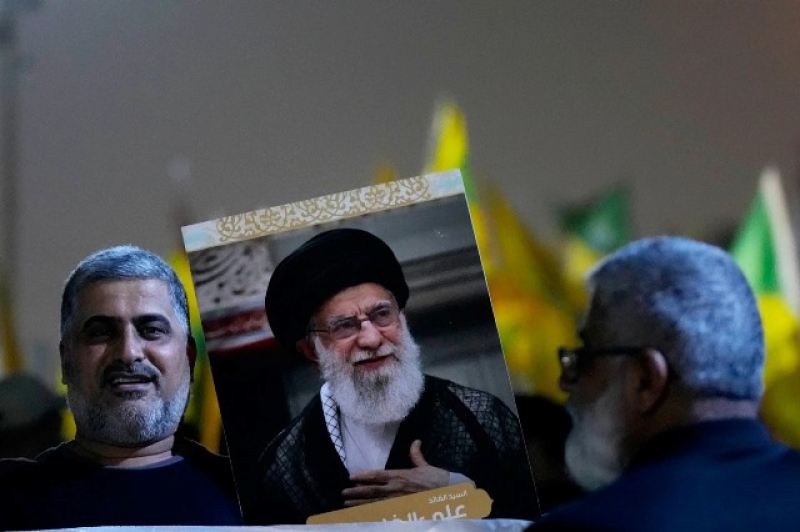- Intimidation or bloodshed cannot halt Bangladesh’s march to democracy |
- Khaleda Zia integral to an important chapter in BD history: Yunus |
- Enthusiasm marks Victory Day celebrations across Bangladesh |
- Dhaka-Delhi ties deep; to be shaped by trust, dignity, mutual respect |
- EU deploys election observation mission to Bangladesh |
Israel warns, evacuate Iran’s Arak heavy water reactor area

Iranian Supreme Leader Ali Khamenei with two other leaders. Photo Agency
DUBAI, June 18 (AP/UNB) — On Thursday, Israel’s military issued a warning urging civilians to evacuate the area surrounding Iran’s Arak heavy water reactor. The notice, posted on X (formerly Twitter), featured a satellite image of the facility encircled in red — a style similar to prior alerts that were followed by military strikes.
The warning came on the seventh consecutive day of Israeli airstrikes on Iran. This latest escalation followed Iranian Supreme Leader Ayatollah Ali Khamenei’s firm rejection of U.S. demands for surrender and his caution that any American military involvement would inflict “irreparable damage to them.” Israel, meanwhile, has eased some domestic restrictions, signaling a reduction in missile threats from Iran.
The Israeli military confirmed that Thursday’s strikes targeted Tehran and other locations across Iran, but did not provide further details. So far, Israeli attacks have struck key nuclear-related sites, including the uranium enrichment facility at Natanz, centrifuge production facilities around Tehran, and a nuclear site in Isfahan. These airstrikes have resulted in the deaths of high-ranking Iranian generals and nuclear scientists.
According to a Washington-based Iranian human rights group, the conflict has led to the deaths of at least 639 individuals in Iran, including 263 civilians, with more than 1,300 injured. In retaliation, Iran has launched approximately 400 missiles and numerous drones toward Israel, killing at least 24 people and injuring hundreds. Some of the Iranian strikes have hit residential buildings in central Israel, causing significant damage.
The Arak heavy water reactor, located about 250 kilometers (155 miles) southwest of Tehran, uses heavy water to cool its systems. This process can produce plutonium as a byproduct — material that could potentially be used to create nuclear weapons. If pursued, this would offer Iran a second path to nuclear armament in addition to uranium enrichment.
Under the 2015 nuclear deal with world powers, Iran agreed to redesign the Arak facility to reduce proliferation concerns. In 2019, Iran activated the reactor’s secondary circuit, which at the time did not breach the agreement’s terms. Following the U.S. withdrawal from the nuclear accord in 2018 under President Donald Trump, Britain took on the role of helping Iran modify the reactor to limit plutonium output.
The International Atomic Energy Agency (IAEA), the UN’s nuclear oversight body, has cautioned Israel against striking Iranian nuclear facilities. Inspectors from the IAEA reportedly last visited Arak on May 14. However, due to limitations imposed by Tehran, the agency has stated it lost “continuity of knowledge” regarding Iran’s heavy water production, meaning it can no longer fully verify Iran’s production and stockpile levels.
As part of the 2015 nuclear agreement, Iran had committed to selling its heavy water stockpiles to Western countries to comply with the deal’s terms. In one notable instance, the United States purchased 32 tons of heavy water for over $8 million — a transaction that drew criticism from opponents of the agreement.

